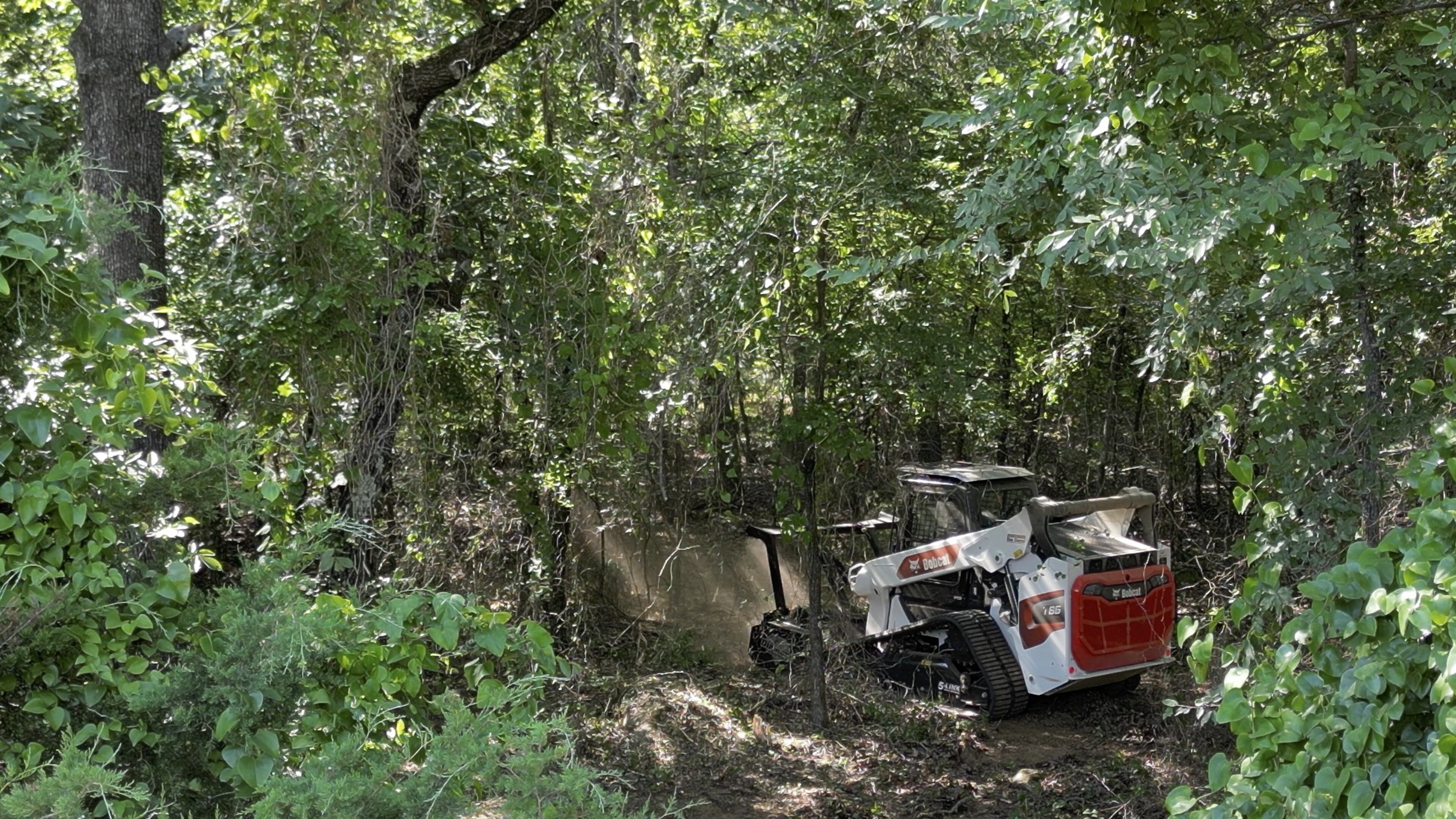Forestry Mulching
FLS offers Forestry Mulching as an eco-friendly & efficient method of Land Clearing.
Forestry mulching is an eco-friendly method of clearing land. Instead of traditional bulldozing, it uses specialized equipment to grind vegetation (like trees and brush) into mulch. This process helps control invasive species, reduce fire risk, and improve soil health.
Our team’s expertise, along with state-of-the-art equipment, help to ensure our commitment to delivering high-quality Forestry Mulching services while prioritizing our companies Values and Core Beliefs.

Why Choose Fassio Land Solutions for Forestry Mulching / Mastication Services?
We can do forest mulching on almost any terrain, and with our highly skilled team utilizing state-of-the-art equipment, we can mulch your vegetated land in almost any conditions: wet, cold, dry, or hot, our team is ready to tackle your project.
There are many benefits to forestry mulching, including:
COST EFFECTIVE
A mulcher attachment allows you to effectively turn the brush and other vegetation into mulch on the spot. Utilizing a CTL, Skid Steer, combined with a mulcher, is more cost-effective than bringing in multiple machines, such as bulldozers, tractors and loaders.
ENVIRONMENTALLY FRIENDLY
Mulch is made from portions of the earth. When you leave these materials in mulched form, you produce less waste while providing a protective layer to the ground. This protective layer made from natural materials can help prevent erosion and foster native plant growth.
INSECT MANAGEMENT
Pesky, dangerous and invasive insects often live within overgrowth and tall grasses. When you mulch, you get rid of the area where this type of insect lives and breeds. An example of a potentially harmful species is a tick. Mulching can help reduce and control the population of creatures like ticks and those that pose risks to humans and wildlife.
SIMPLIFIED LAND MANAGEMENT
No matter what type of land you are working on, you will need to manage its growth. Unwanted plants can spring up, including weeds. However, a layer of mulch can prevent weeds from growing. Additionally, mulch can aid in the fertilization of the soil. Proper land management is also vital to reduce the risk of wildfires.
IMPROVES SOIL QUALITY
When finely chipped and ground mulch can be left behind to decompose naturally, it creates great food for the soil that improves its overall quality and integrity, reduces erosion, and better supports mature trees.
LESS DESTRUCTIVE TO LANDSCAPE
Forestry Mulching doesn't involve ripping or pulling anything out of the ground; instead, it grinds and chips things down to ground level, leaving behind a bed of natural mulch. Utilizing the Selective Mulching method makes it much easier to leave specific vegetation, like mature trees, behind while removing underbrush, smaller trees, and other unwanted vegetation.
WILDFIRE PREVENTION
Proactive mulching can help prevent wildfires by reducing the amount of leafy plants, dry brush, and other fuel sources on the forest floor. If left untreated, these fuel sources have a higher chance to catch fire and spread to the forest canopy
WHAT IS FORESTRY MULCHING?
Take a look at this video, provided by a previous customer/partner, where Fassio Land Solutions utilized the Forestry Mulching process to clear land for two future home sites on 160 acres in Western Arkansas
See What Our Customer’s Are Saying
We called Fassio Land Solutions to clear our wildly overgrown frontage property. Let me start with saying we made the RIGHT CALL! Mr. Fassio was timely, diligent in his craft and extremely caring in pulling off exactly what we wanted!! On top of it all Mr. Fassio had a very approachable demeanor which made choosing him that much easier! If anyone is looking for a job done right the first time give them a call and they will make it happen no doubt! Thank you for everything you did for us! We cannot express how grateful we are for what you did!!
Conner B.
OUR PROCESS - LET’S GET STARTED!
REQUEST A QUOTE
FLS REP CONTACTS YOU
ON-SITE MEETING
ESTIMATE PROVIDED
ESTIMATE APPROVAL / REMIT DEPOSIT
SCHEDULE PROJECT









